Filter by

Calgary : city of animals
How have our interactions with animals shaped Calgary? What can we do to ensure that humans and animals in the city continue to co-exist, and even flourish together? This wide-ranging book explores the ways that animals inhabit our city, our lives and our imaginations. Essays from animal historians, wildlife specialists, artists and writers address key issues such as human-wildlife interactions…
- Edition
- -
- ISBN/ISSN
- 9781552389690
- Collation
- xvi + 126 p
- Series Title
- -
- Call Number
- 591.9712338 JIM c
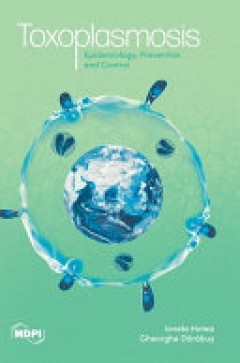
Toxoplasmosis : epidemiology, prevention and control
Scientific motivation to publish this book comes from the increased interest in the study of toxoplasmosis, showed all over the world. Though the Toxoplasma gondii infection was first discovered in 1908, toxoplasmosis remains a today's research topic, a realm of questions and dilemmas that interest both the veterinarians and the human doctors. Studies in the field are directed to the epidemiolo…
- Edition
- -
- ISBN/ISSN
- 9783036526997
- Collation
- ix, 202 p
- Series Title
- -
- Call Number
- 616.936 HOT
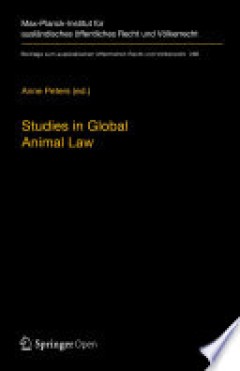
Studies in global animal law
This open access book contains 13 contributions on global animal law, preceded by an introduction which explains key concepts and methods. Global Animal Law refers to the sum of legal rules and principles (both state-made and non-state-made) governing the interaction between humans and other animals, on a domestic, local, regional, and international level. Global animal law is the response to t…
- Edition
- 1
- ISBN/ISSN
- 9783662607565
- Collation
- -
- Series Title
- -
- Call Number
- 346.046954 ANN s
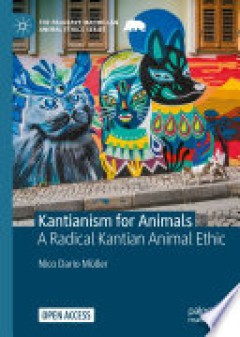
Kantianism for animals : a radical Kantian animal ethic
This open access book revises Kant’s ethical thought in one of its most notorious respects: its exclusion of animals from moral consideration. The book gives readers in animal ethics an accessible introduction to Kant’s views on our duties to others, and his view that we have only ‘indirect’ duties regarding animals. It then investigates how one would have to depart from Kant in order t…
- Edition
- -
- ISBN/ISSN
- 9783031019302
- Collation
- XXI, 245 P
- Series Title
- -
- Call Number
- 170.92 NIC k
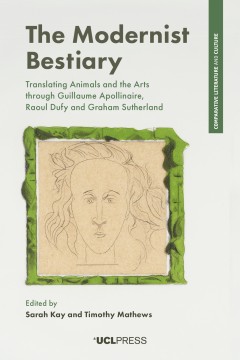
The modernist bestiary : translating animals and the arts through Guillaume A…
The Modernist Bestiary centres on Le Bestiaire ou Cortège d’Orphée (1911), a multimedia collaborative work by French-Polish poet Guillaume Apollinaire and French artist Raoul Dufy, and its homonym, The Bestiary or Procession of Orpheus (1979), by British artist Graham Sutherland. Rather than reconstructing the lineage of these two compositions, the book uncovers the aesthetic and intellectu…
- Edition
- -
- ISBN/ISSN
- 9781787351516
- Collation
- xiii, 186p.; ill.
- Series Title
- -
- Call Number
- 704.9432 MOD d
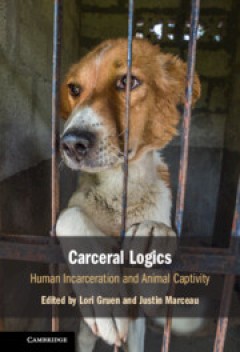
Carceral Logics : Human Incarceration and Animal Captivity
Carceral logics permeate our thinking about humans and nonhumans. We imagine that greater punishment will reduce crime and make society safer. We hope that more convictions and policing for animal crimes will keep animals safe and elevate their social status. The dominant approach to human-animal relations is governed by an unjust imbalance of power that subordinates or ignores the interest non…
- Edition
- -
- ISBN/ISSN
- 9781108919210
- Collation
- xiii, 450 p ; ill
- Series Title
- -
- Call Number
- 344.049 CAR L
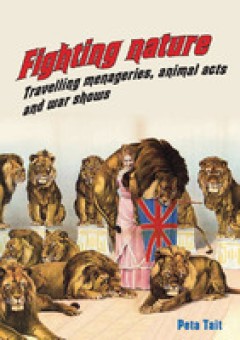
Fighting nature : travelling menageries, animal acts and war shows
Fighting Nature is an insightful analysis of the historical legacy of 19th century colonialism, war, animal acquisition and transportation. This legacy of entrenched beliefs about the human right to exploit other animal species is yet to be defeated. Throughout the 19th century animals were integrated into staged scenarios of confrontation, ranging from lion acts in small cages to large-scale r…
- Edition
- -
- ISBN/ISSN
- 9781743325001
- Collation
- xi. ;ill. ;271 p.
- Series Title
- -
- Call Number
- 304.27. PET f
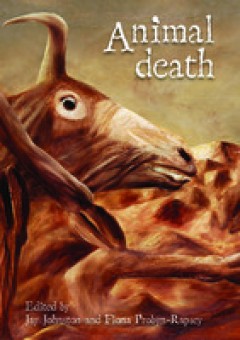
Animal death
Animal death is a complex, uncomfortable, depressing, motivating and sensitive topic. For those scholars participating in Human-Animal Studies, it is – accompanied by the concept of 'life' – the ground upon which their studies commence, whether those studies are historical, archaeological, social, philosophical, or cultural. It is a tough subject to face, but as this volume demonstrates, on…
- Edition
- -
- ISBN/ISSN
- 9781743325247
- Collation
- xv. :ill. ;351 p.
- Series Title
- -
- Call Number
- 179.3. JAY a
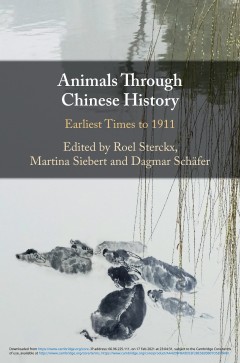
Animals through Chinese history : earliest times to 1911
This volume opens a door into the rich history of animals in China. As environmental historians turn their attention to expanded chronologies of natural change, something new can be said about human history through animals and about the globally diverse cultural and historical dynamics that have led to perceptions of animals as wild or cultures as civilized. This innovative collection of essays…
- Edition
- -
- ISBN/ISSN
- 9781108551571
- Collation
- xiii, 277p. : ill.
- Series Title
- -
- Call Number
- 590.951 ANI a
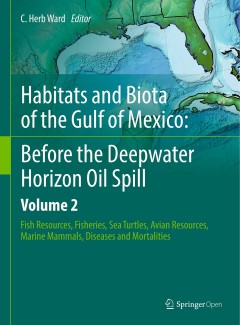
Habitats and biota of the Gulf of Mexico : before the Deepwater Horizon oil s…
The Gulf of Mexico is an open and dynamic marine ecosystem rich in natural resources but heavily impacted by human activities, including agricultural, industrial, commercial and coastal development. Nutrients and pollutants from coastal communities and dozens of rivers flow into the Gulf, including material from the Mississippi River watershed, which drains over one third of continental United …
- Edition
- -
- ISBN/ISSN
- 9781493934560
- Collation
- xlv, 1757p. : ill.
- Series Title
- -
- Call Number
- 577.7364 HAB h
 Computer Science, Information & General Works
Computer Science, Information & General Works  Philosophy & Psychology
Philosophy & Psychology  Religion
Religion  Social Sciences
Social Sciences  Language
Language  Pure Science
Pure Science  Applied Sciences
Applied Sciences  Art & Recreation
Art & Recreation  Literature
Literature  History & Geography
History & Geography